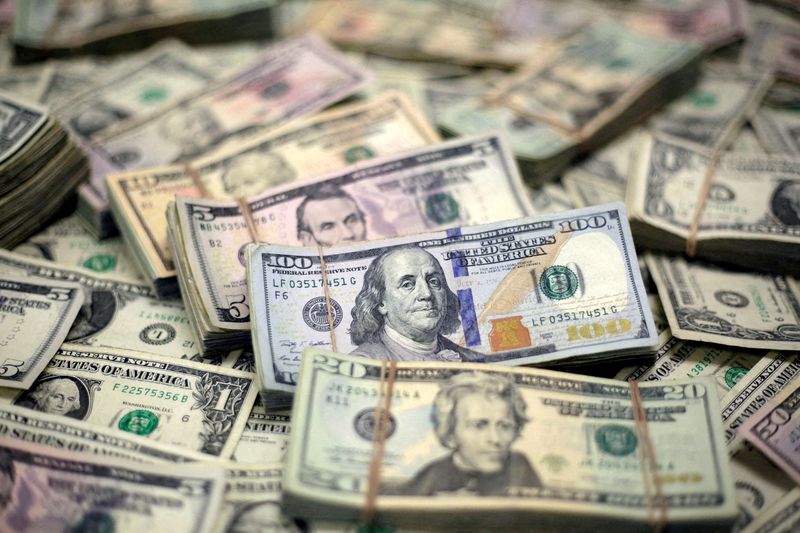In a notable shift within financial markets, the U.S. dollar experienced a decline in Asia as investors prepared for what could be a crucial week for the global economy. The upcoming week is marked by significant political events, namely the U.S. election, which is expected to influence interest rate decisions by the Federal Reserve. As opinion polls show Democratic candidate Kamala Harris in a statistically tied race with Republican candidate Donald Trump, uncertainties abound regarding potential policy changes. Analysts have speculated that Trump’s governance would lead to an increase in inflation and bond yields, contrasting with Harris’ more stable, continuity-oriented platform. The immediate market reaction included a modest rise in the euro and a slight dip in the dollar against other currencies, indicating investor wariness and shifting sentiments around the election and its implications on monetary policy.
The dollar’s early retreat can be partially attributed to a notable poll showing Harris with a surprising lead in Iowa, which resonates with her base, particularly among female voters. Financial analysts, such as Chris Weston from Pepperstone, have indicated that a Trump victory could be perceived as a boon for the dollar, particularly if he governs with full congressional control. This scenario may lead to a sell-off in U.S. Treasuries, subsequently resulting in a stronger dollar. In contrast, a win for Harris, coupled with a divided Congress, could lead to a reversal of market positions that have been favoring Trump, resulting in downward pressure on the dollar and other assets like gold and Bitcoin.
Amid this political uncertainty, market expectations lean towards the Federal Reserve opting for a more conservative rate cut of 25 basis points during its upcoming meeting. Financial futures indicate a widespread expectation (99% probability) of a rate adjustment down to a target range of 4.50%-4.75%. Furthermore, market anticipation suggests similar cuts in subsequent months, leading analysts to project a total of four consecutive reductions in the first half of 2024. This dovish forecast from institutions like Goldman Sachs highlights the uncertainty surrounding both the pace and the final levels that interest rates might achieve in the coming year.
In addition to U.S. monetary policy actions, global central banks, including the Bank of England and the Riksbank, are preparing for their meetings where rate cuts are likely to be discussed. The Bank of England faces a complicated situation following a sharp decline in gilt prices triggered by the recent Labour government’s budget announcement, which has also impacted the British pound negatively. Early Monday trading data shows sterling recovering slightly to $1.2963 but still significantly below previous levels, indicating ongoing market challenges within the U.K. economy.
Moreover, the economic landscape in China is also under scrutiny as the National People’s Congress convenes this week. Chinese policymakers are expected to propose a significant increase in debt spending, possibly exceeding 10 trillion yuan ($1.40 trillion), aimed at stimulating a fragile economy amid slower growth rates. Reports suggest that these plans will be revealed shortly, contributing to heightened expectations regarding potential economic recovery measures within China, which could have downstream effects on global markets and commodity prices.
In summary, the intersection of political dynamics in the United States with broader economic concerns worldwide is creating a complex environment for investors. The implications of the U.S. election on monetary policy, anticipated interest rate changes, and the response of central banks across the globe will play crucial roles in shaping market movements this week. With the dollar experiencing fluctuations and currencies like the euro and pound reacting to local economic conditions, all eyes remain on the developments within both domestic and international financial landscapes as they venture into an uncertain future.

